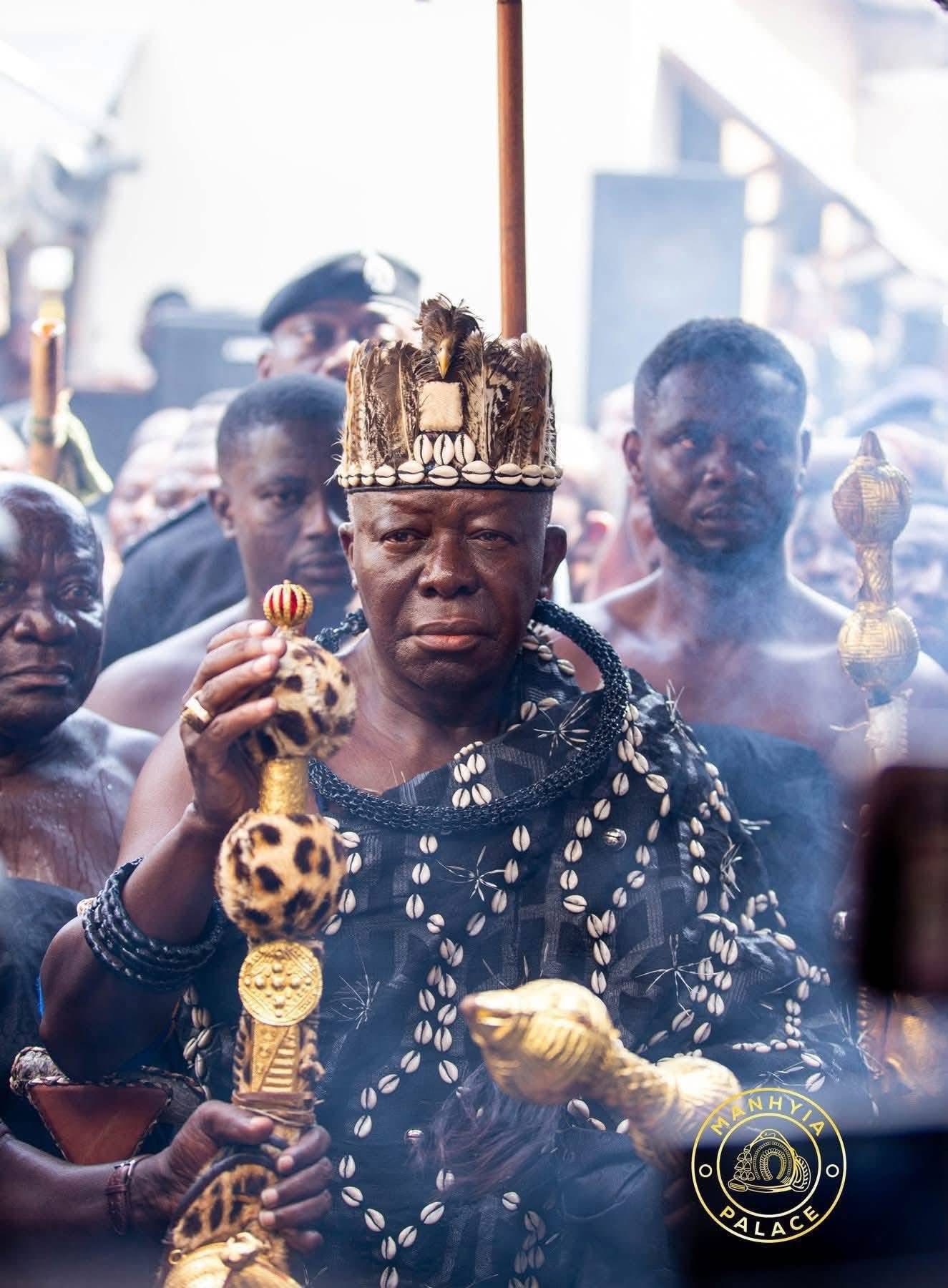On the final day of the Asantehemaa’s burial, the King wore a traditional cloth called TUMI (Power)
This was no ordinary cloth. It carried the voice of the ancestors, the strength of the stool, and the memory of the Queen whose journey to Asamando was being honoured.

Upon it shone two sacred Adinkra symbols;
•The first, woven through the cowry shell motif, echoed the handle of the King’s Mponponsuo sword. This was Akofena, the crossed swords of courage, valour, and legitimate authority. In that moment of mourning, the Asantehene stood not only as a grieving son, but as the living emblem of sovereignty, declaring that the power of Asante does not fall with death.

•The second, stamped richly across the cloth, was Bese saka, the kola nut, sign of affluence and prosperity. It proclaimed that though the Queen had departed, her nurturing spirit and her guardianship of Asante’s wealth and stability would never fade.
Thus, the King’s robe was more than attire; it was a ritual declaration. It clothed grief with strength, wrapped loss in power, and reminded all that the Asante Kingdom, though bowed in sorrow, still stood unbroken, rich in spirit, and eternal in authority.
Piawwwwwwwwwww!!!
Credit: Sammy – Manhyia Palace Museum




